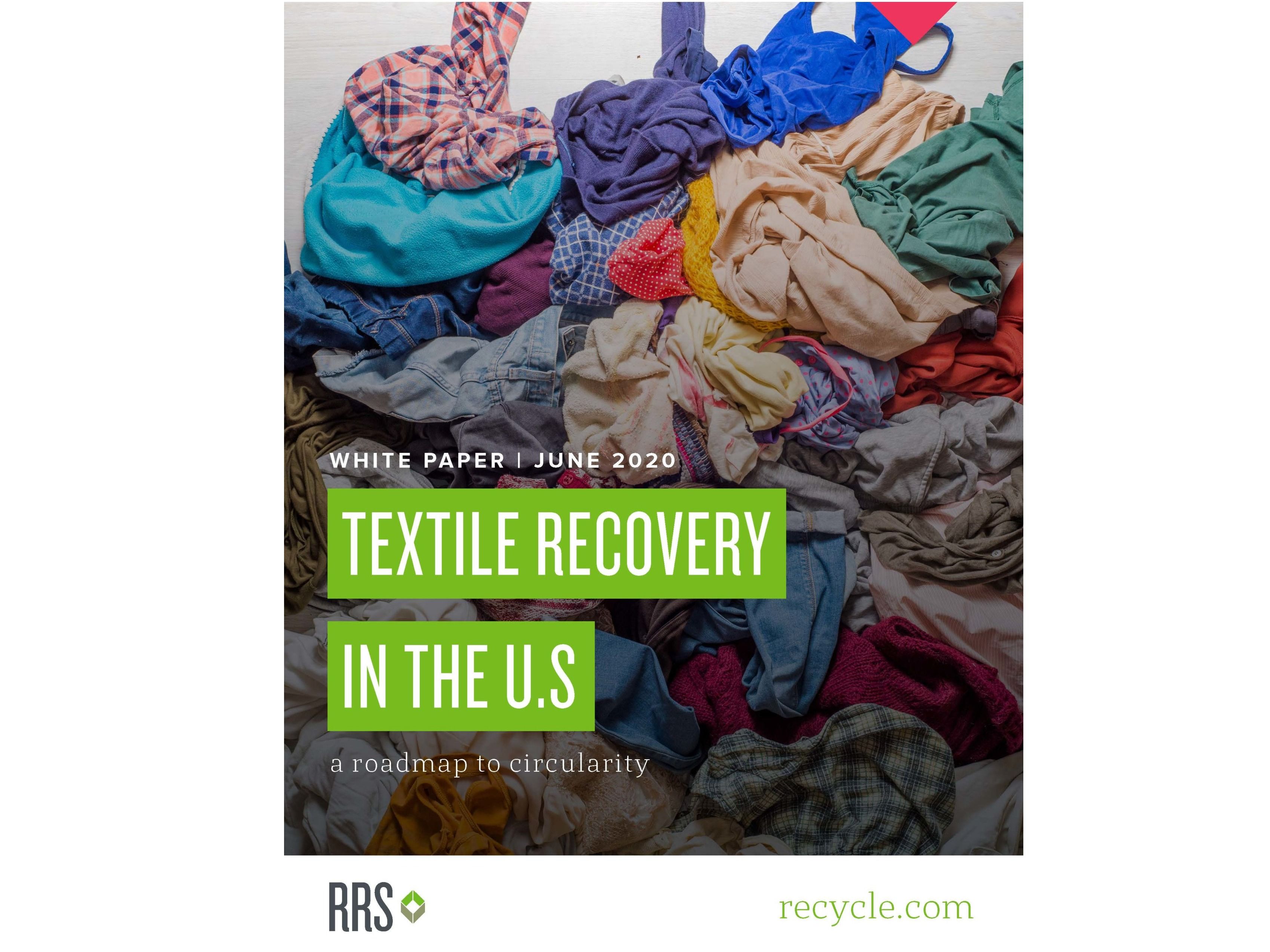
Added: Oct 01, 2021
Last edited: Oct 01, 2021
In June 2020, recovery solutions provider, Resource Recycling Systems (RRS), released a report evaluating the current state of textile waste in the U.S. waste stream and outlining key elements of an ideal recovery system capable of maintaining textiles' best and highest uses throughout the value chain. With their vision for a future-state system, RRS describes the path toward more sustainable and resilient materials management systems and a circular textile economy. The paper also highlights opportunities for intervention that brands, innovators, and municipalities can utilize in their own transitions from a linear business model to a circular textiles system. This road map provides guidance to stakeholders across the value chain on potential partners who can help to drive real material change in the textile waste stream at both the brand- and industry-levels.
Used textiles, one of the fastest growing waste streams, exist as an untapped resource
The growth of textile waste in the United States is outpacing the growth of every other major category of waste. T
Textile waste, r both apparel and non-apparel textile waste , in the municipal solid waste (MSW) stream increased 78 percent by weight between 2000 and 2017 while the waste stream as a whole grew 10 percent over the same time period
On a per capita basis, textile waste increased 54 percent per person, while overall waste generation per capita decreased by 5 percent
overall growth in disposal of textile waste is compounded by a stagnant diversion rate of around 15 percent. In 2017, only 2.6 of 16.9 million tons of textile waste was diverted from disposal
The growth in textile waste over the past two decades can be partly or mostly attributed to a shifting consumer mindset about the durability of clothing. Once viewed as lasting goods, clothing and home textiles are now often viewed as disposable.
consumer purchasing habits have driven average product prices down, and that price pressure has translated to price constrictions on materials. As a result, product quality suffers and less-durable materials have a shorter lifespan.
. In the United States alone, consumers buy a new garment every five days and keep these items for a shorter period of time; more than half of fast fashion produced is disposed of in under one ye
Recovering these fabrics and fibers as inputs to a variety of closed loop and cascading end uses presents the opportunity to develop more sustainable and resilient supply chains.
transform textile manufacturing, use, and recovery into a truly sustainable and resilient system.
e development, successes, and failures of existing recovery systems for metal, glass, plastic, and paper can be applied to create successful circular systems for textiles, including the establishment of infrastructure, practices, corporate culture, and consumer mindset
AS AWARENESS AND UNDERSTANDING around textiles circularity has increased, the one area which has been somewhat overlooked is the end of use textiles supply chain, namely the sorters and collectors responsible for aggregating our ‘future feedstock'.
comprehensive review of the textile reuse and recycling industry in the United States and the need for collaboration among all stakeholders trying find a solution to the abundance of textile waste that ends up in landfills.
which needs to take place in order to provide high volume supply of suitable feedstock to future regenerative recycling plants like ours.
salient examples of what the current textile waste and recycling landscape looks like. T
plot the industry's current position while outlining crucial paths for everyone to navigate a more sustainable way forward
RRS’s white paper report necessarily highlights the gaps and evolution of the textile market segment
It also includes the components of a successful textile recovery system:
1. Widespread convenient collection systems;
2. Regional textile sorting facilities (textile MRFs) that generate readily accessible material volume and composition data, paired with mechanical and advanced recycling technologies to convert inputs into global commodities;
3. Robust end markets and brand uptake agreements that support a domestic recycler economy;
4. Compelling outreach that drives engagement with consumers, brands, and communities; 5. Thoughtful supportive policies that create a level playing field and incentivize textile recovery and infrastructure development; and 6. Innovative strategic partnerships that increase the circularity of pre-consumer and post-consumer textiles and decrease textile waste going to landfill.


Stretch the lifetime
Use waste as a resource
Team up to create joint value
Maximise lifetime of products after use
Valorise waste streams - closed loop
Industry collaboration
Strengthen and advance knowledge
